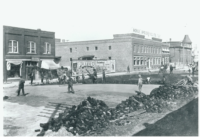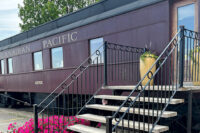Efficiency will drive us out of transit problem
By Letter to the Editor on April 30, 2021.
Editor: Over the past several months, the Lethbridge Transparency Council has observed that the majority of City of Lethbridge buses are driving around empty, or with only a handful of riders.Â
 Figures from City sources indicate that a fleet of 42 buses (about 36 passenger capacity each) operate on 14 routes, logging around 970,000 kilometres per year. 40% of these are spares.
 In 2005, Lethbridge Transit had an annual ridership of 2,555,695 passengers on 25 buses. Expenses for the same year amounted to $6,023,794. With revenues of $2,243,222, the net cost to the taxpayer was $3,780,572 or $1.47 per passenger per ride.
 By 2017 ridership had dropped to 1,200,000 passengers, a decrease of 1,355,695 (53 per cengt). In 2017, expenses amounted to $13,936,205, revenues were $4,152,971, and the resulting net cost to the taxpayer was $9,783,234. This is an increase of $6,002,662 or 158 per cent. Taxpayer cost per passenger ballooned to $8.15 per passenger per ride! Of note is that $9,472,241 (67 per cent) of the 2017 expenses were for wages and benefits. We do not believe this amount to be sustainable.
 Stantec (who authored the Lethbridge Transit Master Plan in 2017) and the KPMG Operational Review both reported that the average usage was 14 rides per hour in Lethbridge. Peer transit systems in other communities average 25 rides per hour. In the actual community comparisons, Lethbridge is at the bottom of the list.
Stantec also acknowledged that two Lethbridge routes carry 40 per cent of all riders. This would indicate that the other routes are operating well below the 14 rides per hour average. This is all happening on 40-foot buses (capacity 36-38 passengers) costing $620,000 each.
 The city transit manager was quoted on Global in July 2020 as saying that ridership was running at 12 per cent of normal because of COVID, which would be about 132,000 riders per year. It is our understanding service levels were not reduced during COVID, which would translate to the tax-payer an approximate cost of $102.97 per passenger per trip. This is a short-term accentuation of a clear problem.
 Through the draft Capital Improvement Program, the City is wanting an additional $29,230,000 for: new transit terminals ($3,967,000), new heated bus shelters ($5,450,000), and electric Buses and charging infrastructure ($19,813,000).
 The first order of business would be to re-establish ridership levels. The City of Edmonton has estimated it will take two years for ridership to recover to pre-COVID levels. Why would we be trying to change to electric buses now? Judging from our evaluation, we should be trying to gain efficiency, not spend our way out of the problem.
Have your voice heard! Please complete the City of Lethbridge CIP survey by April 28 at https://lethbridgecipbudget.ethelo.net/page/welcome, and be sure to comment on these proposed transit expenditures. You can also contact 311 to state your opinion on empty buses. Finally, tell council no more 40-foot limos!
We can do better!
Irwin Wyrostok
Lethbridge Transparency Council
-1




